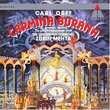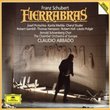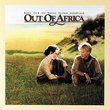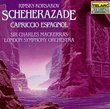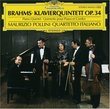| All Artists: Modest Mussorgsky, Maurice Ravel, Giuseppe Sinopoli, New York Philharmonic Title: Mussorgsky: Pictures at an Exhibition; Night on Bald Mountain; Ravel: Valses nobles et sentimentales Members Wishing: 0 Total Copies: 0 Label: Deutsche Grammophon Release Date: 4/5/1991 Genre: Classical Styles: Forms & Genres, Theatrical, Incidental & Program Music, Historical Periods, Modern, 20th, & 21st Century Number of Discs: 1 SwapaCD Credits: 1 UPC: 028942978522 |
Search - Modest Mussorgsky, Maurice Ravel, Giuseppe Sinopoli :: Mussorgsky: Pictures at an Exhibition; Night on Bald Mountain; Ravel: Valses nobles et sentimentales
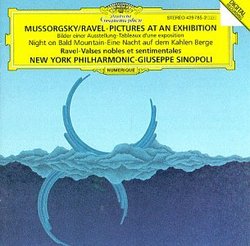 | Modest Mussorgsky, Maurice Ravel, Giuseppe Sinopoli Mussorgsky: Pictures at an Exhibition; Night on Bald Mountain; Ravel: Valses nobles et sentimentales Genre: Classical
|
Larger Image |
CD DetailsSimilar CDsSimilarly Requested CDs
|
CD ReviewsBest "Pictures at an Exhibition" recording of our time John Kwok | New York, NY USA | 10/15/2002 (5 out of 5 stars) "This splendid Deutsche Grammophon recording of Mussorgsky's "Pictures at an Exhibition" deserves its critical praise as among the finest versions ever recorded. Sinopoli leads the New York Philharmonic in a majestic performance, noted for his appropriate use of broad tempi, slowly building from one satisfactory climax to another. The New York Philharmonic's brass and string sections are exemplary, playing with much warmth and brilliance. Indeed, the New York Philharmonic's brass section sounds as vibrant as the Chicago Symphony's or the Berlin Philharmonic's. "Pictures at an Exhibition" is coupled with two splendid performances of Mussorgsky's "Night on Bare Mountain" and Ravel's "La Valse". Anyone who doubts whether the New York Philharmonic can play as well as its peers in Chicago and Berlin should listen to this fine recording, which is unquestionably among the orchestra's best in the past two decades." Cross-Compare before you buy! Martin Selbrede | The Woodlands, Texas | 10/13/2005 (3 out of 5 stars) "Although I already had plenty of versions of the Mussorgsky works in my CD collection, I was swayed by the lavish praise heaped on this Sinopoli recording by Amazon reviewers. Buying it was certainly one way to determine if the praise was deserved. Since I decided it wasn't, I'm out the money but gained some experience in trusting my fellow reviewers here on Amazon. Sinopoli has done credible work elsewhere (Gurrelieder, Schubert's 8th, etc.), but this version of Pictures on the Bald Mountain (or is it Night at the Exhibition?) wasn't remarkable. Yes, there was the occasional "hmmm, interesting" moment, but they were few and far between. Of the movements, Limoges seemed to be well-thought-out from beginning to end: if all the movements had this quality of interpretation, Sinopoli would have earned 5 stars, not 3. One reviewer praised the muted trumpet solo for being rich rather than thin, but wasn't a thin sound from Schmuyle what Ravel intended in his transcription (although I'm not necessarily endorsing Karajan's version)? There are far worse versions than this (not considering Tomita's for the moment), but there are certainly more definitive versions as well. Look to Giulini and Abbado as more reliable guides here, at least on Pictures. (Abbado's original version of Night on Bald Mountain is worth acquiring, but it's not a fair comparison here because it's a completely different work than what Rimsky put through his beatgrinder.)" Lacks Teamwork and Musicianship Music Is Everything | Colorado Springs, CO USA | 12/21/2009 (2 out of 5 stars) "I've encountered a surprising number of people who rave about this recording of Pictures at an Exhibition, so I was excited to hear it, but it proved completely disappointing. The New York Philharmonic could be one of the best orchestras in the world today, but they just don't play like a team.
While the strings and winds are generally quite good on this recording (and particularly the winds in the Ravel), the New York Philharmonic brass section is especially problematic. If they played with their best sounds, accurately produced what Mussorgsky wrote, and responded to Sinopoli's interpretation, this would have been a fantastic performance. Instead, they're constantly overblowing, to the point that they sound either angry or like they're trying to assert their insecure manhood, and are constantly holding notes past the written lengths, which bleeds into other textures and ruins harmonies. This alone makes this particular performance unbearable. I had hoped they might redeem themselves with "Night on Bald Mountain" or "Valses nobles et sentimentales," but was sorely disappointed. More of the same. Don't get me wrong: I like a powerful brass section. However, there must be taste, musicality, and musicianship. For that, and for a fine performance of Pictures at an Exhibition with a powerful brass section, I find Solti's recording with the Chicago Symphony far more rewarding, and Solti's interpretation better-paced." |

 Track Listings (24) - Disc #1
Track Listings (24) - Disc #1